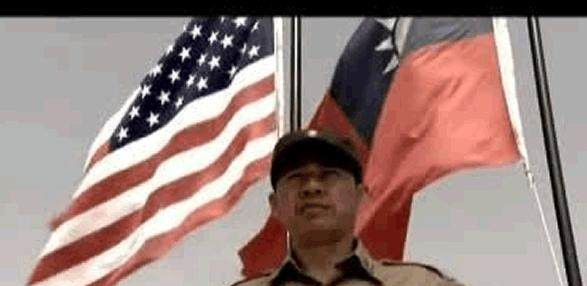In 1942, Chiang Kai-shek's government sent 300,000 people into Burma to defend the Burma Highway. The Chinese Expeditionary Force fought side by side with the Expeditionary Forces of britain, the United States and other countries in the jungles of Burma, fighting a bloody battle against the Japanese. In three years, the Chinese expeditionary military casualties of 150,000 people, completely annihilated the Burmese Japanese army, and promoted China's prestige.

In this operation, the expeditionary force sacrificed 11 officers of the rank of general.
Dai Anlan is a student of Whampoa Phase III. In 1942, he led the 200th Division to Burma to participate in the war, and achieved military achievements such as the Battle of Tonggu and the recovery of Tangji. On May 18, 1942, he was seriously wounded in the command of the breakthrough battle in the Langke area, and on the 26th, he was martyred in the village of Maobang in northern Burma, and Ma Ge was wrapped up and returned to China. Chiang Kai-shek posthumously awarded the rank of lieutenant general. Stilwell commented that Dai Anlan was "the first person to make meritorious contributions to the great Han Dynasty", and US President Roosevelt posthumously awarded Dai Anlan a medal of merit.
Hong Xing, graduated from the Army University, served as the commander of the newly organized Thirty-ninth Division of the Second Army of the Army. In 1943, he led his troops to defeat the Japanese army at The Turf Pass with a large knife, and the Japanese army called him the "Chinese God of War". In 1944, in the Battle of Longling, he was ordered to defend Zhang Jinshan and The South Heavenly Gate to block the main force of the Japanese Kou. Later, Hong Xing died in a jeep crash on the way to the meeting and posthumously recognized the lieutenant general.
Ling Zemin, a student of the sixth term of Whampoa and the colonel of the 288th Regiment of the 96th Division of the Fifth Army, led the whole regiment to fight in Burma in February 1942. At The city of Binwen Xingcheng, Ling Zemin commanded the 288th Regiment to fight bravely, destroyed more than 10 Japanese tanks, and was promoted to major general. Later, in order to rescue the British army, Ling Zemin led the 288th Regiment to occupy the 642 heights of Baida Mountain and stubbornly resisted. In the end, the whole regiment ran out of ammunition, the whole army was destroyed, and Ling Zemin was also shot and killed.
Liu Shuren, a student of the fifth term of Huangpu, was the commander of the 599th Regiment of the 200th Division of the 5th Army of the National Revolutionary Army, and participated in the Battle of Taierzhuang and the Battle of Kunlun Pass. In 1942, he went to Burma with the Expeditionary Force. In May 1942, he heard that Dai Anlan was wounded, so he went to the rescue and was martyred in a fierce battle with the Japanese army, posthumously awarded to the army major general.
Min Jilian, a student of the Huangpu Fifth Term, is the deputy commander of the 36th Division and the director of the Political Department of the Army. In May 1942, Min Jilian led the whole division to eliminate the Japanese Kou on both sides of the Huitong Bridge in Yunnan and Burma, and when he personally inspected the fortifications on the front line, he was unfortunately strafed by Japanese planes and martyred. The coffin was transported back to his hometown with the rank of major general in the army.
Hu Yibin, a student of the third term of Huangpu, is the deputy commander of the 96th Division. In 1942, he entered Burma to fight against the Japanese army. In May, Hu Yibin led his troops to die heroically while covering the transfer of the main force.
Li Zhulin, a student of the seventh term of Huangpu, served as the chief of staff of the major general and the commander of the Burma garrison. In 1942, he entered burma to fight. In 1943, during the Battle of Northern Burma, he was seriously wounded in the chest and martyred with ineffective medical treatment.
Chen Fan, Major General of the Commander of the Sixth Theater of operations of the National Revolutionary Army, was killed in January 1944.
Zhang Jianhong, major general of the Army and senior staff officer of the 5th Army, was killed in January 1944.
Li Yi was a student of the Whampoa Phase VI and a colonel in the Expeditionary Force. In 1944, the Western Yunnan Expeditionary Force launched the Tengchong(Chong)Long(Ling) Campaign. Li Yi led his troops to engage in street battles with the Japanese army. During the battle, he was unfortunately hit by the cold gun of the Japanese army, and he was martyred and posthumously awarded to the major general of the army.
Qin Zibin graduated from Yunnan Daowutang and was the colonel of the Expeditionary Force. In May 1944, the Expeditionary Force captured hokusai's public house, Qin Zibin was seriously wounded in the battle, one leg was broken, and then due to his serious wounds, he died heroically and was posthumously awarded to major generals.